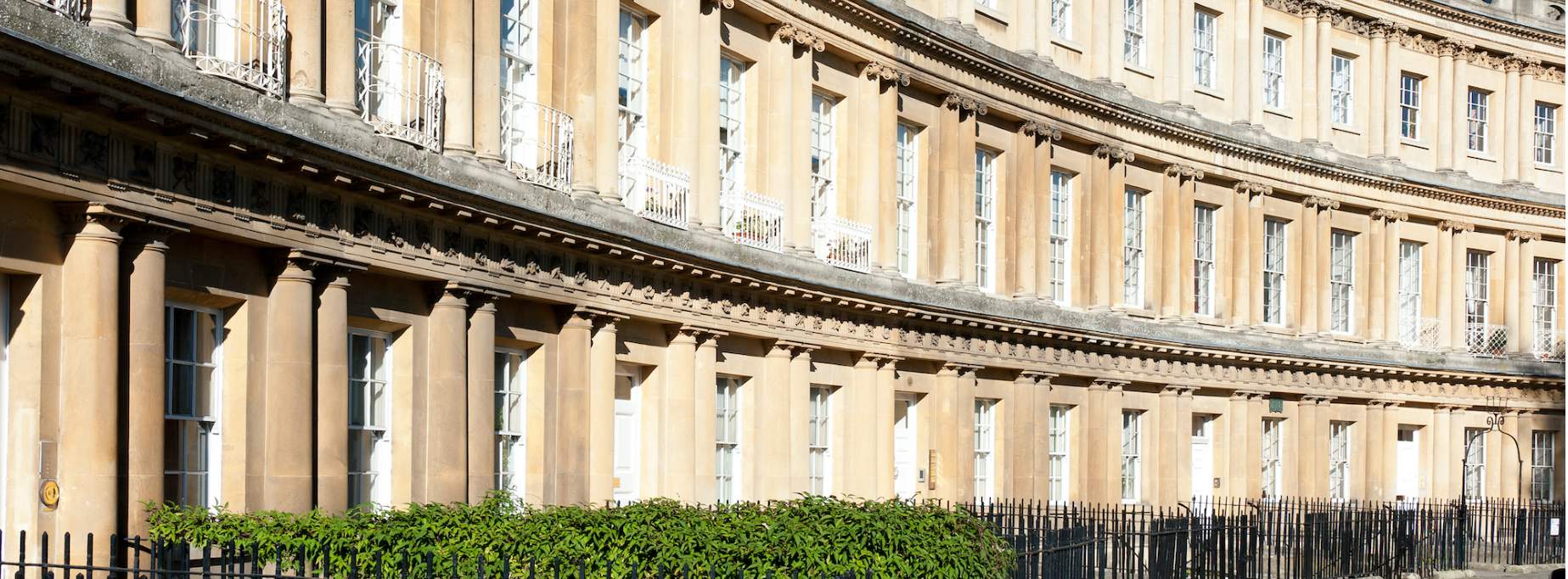With no fewer than two UNESCO World Heritage inscriptions to its name, along with a host of other awards, Bath is a city whose reputation precedes it.
Built around the natural hot springs from which its name derives, this relatively small city packs a punch in terms of its vibrant culture, retail, sports and culinary offer. But it is its rich heritage, wrapped up in some of the world’s most beautiful architecture, that truly sets it apart.
Bath is the most complete Georgian city in the UK, with a variety of crescents, parades and squares that were developed in the Palladian revival style from 1725 onwards, predominantly by John Wood the Elder and his son, John Wood the Younger.
Our office on George Street sits within a stone’s throw of their most celebrated works: Queen Square, The Circus and The Royal Crescent, a designated World Heritage Building, all of which are Grade I listed.
Another famous landmark is Pulteney Bridge. Built in 1770 by eminent architect Robert Adam, it was modelled on the Ponte Vecchio in Florence and is, quite rightly, one of the most photographed pieces of Georgian architecture in the city.
What to look for
Georgian townhouses are the quintessential property associated with Bath and appeal to a wide market, both locally and to buyers from across the UK and internationally.
The townhouses were generally built over four or five storeys, with classic proportions and large sash windows. The traditional layout was to have the kitchen and servants’ quarters in the basement, the ground floor would have an outer hall lit by a fan light, along with an inner hall and often a dining room and parlour. Living accommodation was usually situated on the first floor, with a drawing and withdrawing room, and bedroom accommodation located on the upper floors with attic rooms for children and servants.
Many properties still retain this layout, along with original features including feature fireplaces, panelling, sweeping staircases and ornate cornice work, and the majority are now listed, either Grade I or II.
There was a movement to convert townhouses into flats during the 1950s-1970s but more recently we have seen a trend towards converting them back into complete residential dwellings.
Tips for buyers
Many of our buyers in Bath are looking to achieve a balance between original Georgian features and proportions, with high-end contemporary fixtures, fittings and furnishings – effectively, a character property with the comfort and convenience of a modern house inside.
Known in the interiors world as ‘classic contemporary’ such properties characterise the Bath market. This is largely due to the city’s World Heritage status, which protects its defining 18th-century architecture. These protections do not allow for heritage features to be imitated during alteration, instead asking for a clear step change in aesthetic. For this reason you won’t find pastiche here, instead you see clean, contemporary design features and glass box extensions.
The most important features to buyers are ceiling detail and cornicing, fireplaces and shutters. Original doors are also attractive, as are staircases. Cantilever staircases are relatively commonplace, with stone holding the most appeal. The finest houses will see the stone start at the bottom step and run all the way to the very top.
Those who are attracted by the elegance of classic architecture but prefer a new build home are well-catered for here in Bath, thanks to the introduction of several high-quality new developments and conversions in recent years. Schemes such as Holburne Park and Hope House blend Georgian design features with contemporary layouts and specifications to great effect.
Further information
The residential agents at Savills Bath office have expert local knowledge of the city and surrounding areas, including an understanding of the distinctive properties that help define Bath.
View period properties for sale in Bath

.jpg)
.jpg)
.jpg)
.jpg)
.jpg)
.jpg)
.jpg)
.jpg)
.jpg)
.png)